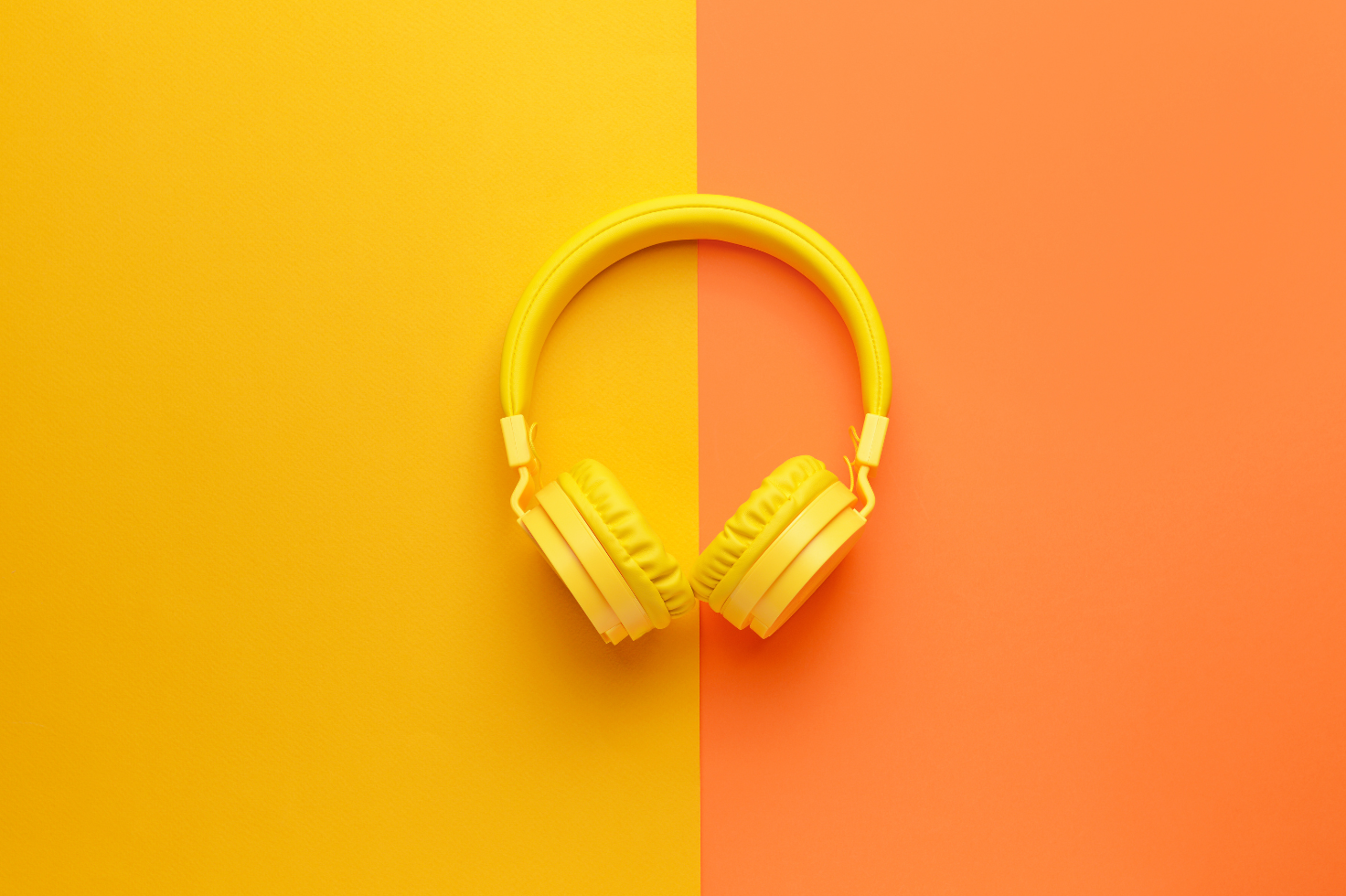Before exploring programmatic audio advertising, it is essential to understand the foundational principles. Programmatic advertising has had a significant impact on the world of digital marketing over the past two decades. The use of automated technology in buying and selling ad inventory has revolutionized the traditional process, making it faster, more efficient, and more targeted. This technological evolution has extended to audio formats.
What is audio advertising?
Audio advertising refers to the practice of promoting products, services, or brands through audio content. It utilizes various audio channels such as radio, music streaming services, podcasts, and smart speakers to reach and engage target audiences. According to Statista, ad spending in the digital audio advertising market is projected to show an annual growth rate of 6.04% with a projected market volume of US$12.82 billion by 2027.
In recent years, digital audio advertising has gained significant popularity due to the increasing number of internet users and the emergence of new audio platforms and formats. With the rise of streaming music services and the integration of smart speakers into households, brands now have a wide variety of channels to deliver their messages to the audience. Audio content has a unique power to create a personal and intimate connection with the audience, enabling brands to effectively convey their message and build brand awareness.
With the advancements in programmatic technology (and the proliferation of wireless headphones), audio advertising campaigns can now reach listeners across a variety of devices including mobile phones and smart speakers. This ensures that brands can deliver their audio ads to the right audience at the right time.
Furthermore, audio advertising offers real-time insights and data analytics, enabling advertisers to assess the impact and effectiveness of their campaigns in real-time. This lets brands optimize their advertising efforts and maximize their return on investment.
In addition to traditional audio ads, there are various audio advertising formats available. This includes live-read advertising, where hosts of podcasts or radio programs deliver the advertisement in their own voice, creating a more authentic and engaging experience for listeners and a higher chance of a captive audience. There are also display ads that incorporate audio elements to capture the attention of users while they consume other content. Brands can leverage the power of audio to evoke emotions, generate awareness, and drive action among their target audience.
Types of audio ads
When it comes to audio advertising, there are several types of ads that brands can use to engage with their target audience. These different formats offer unique ways to deliver a brand message and capture the attention of listeners.
Pre-roll or mid-roll ad
One type of audio ad is the traditional pre-roll or mid-roll ad. These ads play before or during a podcast or streaming music session, allowing brands to reach listeners during their preferred audio content.
Live-read ad
Another type of audio ad is the live-read ad. In this format, hosts of podcasts or radio programs read out the advertisement in their own voice. This personal touch creates a more intimate and authentic experience for listeners, making it easier for brands to build trust and convey their message effectively.
Blended display ads
For brands looking to make a bigger impact, there are also audio ads that incorporate display elements. These ads feature audio elements alongside visuals, capturing the attention of users while they are consuming other content. This format offers a unique blend of audio and visual stimulation, making it an effective way to engage users and leave a lasting impression.
Programmatic audio ads
In addition to these formats, programmatic audio ads have also gained popularity. Using programmatic advertising technology, brands can target specific audiences and deliver their ads in real-time, ensuring that they are reaching the right listeners at the right moment in their journey. This increases the chances of capturing the attention of the intended audience and driving desired outcomes. They can be inserted into podcasts or music streaming services.
Benefits of audio advertising
Audio advertising offers many benefits for brands looking to engage with their target audience and drive impactful marketing campaigns. From reaching a wider audience to creating a more immersive user experience, audio ads have become a valuable component of any digital advertising strategy.
In Spotify’s research report Sonic Science, there are some interesting points that bring out the benefits of audio advertising.
- Ad recall rate is five times higher than expected even when a listener is multitasking
- Digital audio is part of the routines of 63% of listeners; advertisers can take advantage of this screenless engagement scope
- 75% of listeners clicked on an ad if it was blended seamlessly with the type of audio they preferred
Increased reach
One of the key advantages of audio advertising is its ability to reach a diverse range of listeners across various platforms and devices. With the rise of smart speakers, mobile devices, and digital radio, audio content has become more accessible than ever before. By leveraging a wide variety of devices and platforms, brands can ensure that their message is delivered to the right audience at the right time.
Personalized experience
Another benefit of audio advertising is its ability to create a more personalized and intimate experience for the listener. Whether it is a traditional pre-roll or mid-roll ad during a podcast or a live-read ad by a trusted host, audio ads have the power to build trust and convey brand messaging in a more authentic way. By speaking directly to the listener, brands can establish a deeper connection with their audience, increasing the chances of driving engagement and motivating action. Furthermore, brands can tailor ad content to the format where the ad appears (such as comedy, sports, or true-crime podcasts) to further personalize the content.
Real-time insights
Audio advertising offers real-time insights and analytics that help brands measure the effectiveness of their campaigns. With programmatic audio advertising, brands can target specific audiences and deliver ads in real time, ensuring that they are reaching the right listeners during key moments. By utilizing data and insights, brands can continuously optimize their audio campaigns, improving their return on investment and driving desired outcomes.
Different perspective
Furthermore, audio advertising enables brands to stand out from the clutter of visual display ads. With audio ads, brands have the opportunity to capture the attention of users while they are consuming other content. By leveraging the power of sound and music, audio ads are able to create an emotional connection and leave a lasting impression on the listener. This unique blend of audio and visual stimulation makes audio ads a powerful tool for building brand awareness and driving recall.
From the ability to reach a wider audience and create intimate experiences to offering real-time insights and capturing attention, audio ads have proven to be an effective and impactful advertising channel. By incorporating industry-leading audio advertising solutions into their marketing efforts, brands can elevate their campaigns and achieve their desired outcomes.
Easier to create
Creating audio ads may seem like a daunting task, but with the right tools and strategies, it can be easier than you think. With the rise of digital audio advertising, brands now have access to a variety of platforms and resources that make the creation process more accessible and streamlined. One of the reasons why audio ads are easier to create is because of the ever-growing number of audio platforms available.
Whether it’s a catchy jingle or a carefully selected soundtrack, audio ads have the ability to captivate listeners in a unique way. The audio element of an advertisement allows brands to tap into the power of sound. By utilizing music and sound effects, brands can create a memorable and immersive experience for the listener. This can evoke emotions, trigger memories, and ultimately leave a lasting impression on the audience.
Tracking ad spend and cost-effectiveness
When it comes to advertising, tracking your ad spend and ensuring cost-effectiveness are essential for the success of your campaigns. In today’s digital age, where there are countless advertising channels and platforms available, it can be challenging to keep track of your expenses and ensure that you are getting the maximum return on investment.
auOne way to effectively track your ad spend is by utilizing digital advertising platforms that offer real-time insights and analytics. These platforms (like illumin’s) provide you with detailed information about your campaign performance, including impressions, clicks, conversions, and cost per acquisition. By monitoring these metrics, you can quickly identify which advertising channels and strategies are yielding the best results and where you may need to make adjustments.
In addition to tracking ad spend, it is crucial to ensure cost-effectiveness with your advertising efforts. This means making smart decisions when it comes to allocating your budget and choosing the most effective advertising channels for your target audience. Conducting market research and understanding your audience’s preferences and behaviors can help you make informed decisions about where to invest your advertising dollars before you even start your campaigns.
One cost-effective digital advertising strategy is through programmatic advertising. This technology lets you automate the buying and selling of ad inventory, saving time and resources. With programmatic advertising through illumin, you can target specific audiences based on demographics, interests, and behavior, ensuring that your ads are reaching the right people at the right time. This targeted approach helps optimize your ad spend and increase the likelihood of conversions.
To ensure a cost-effective ad spend, utilize different advertising formats. Instead of spending all your budget on one format, such as display ads, consider diversifying your advertising efforts by incorporating audio advertising into your strategy.
Audio ads, such as podcast advertising and music streaming ads, have proven to be effective in reaching a wide variety of audiences. To conclude, when it comes to advertising, engaging your audience is critical. You want to create compelling content that not only captures their attention but also motivates them to take action. This is easiest to achieve when meeting your audience where they are – such as immersed in audio formats.











